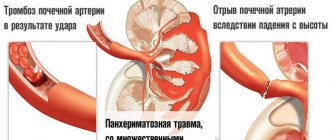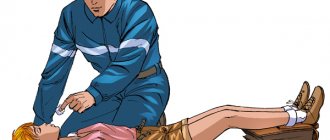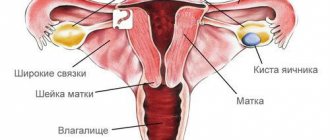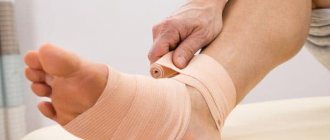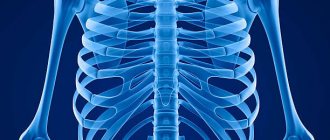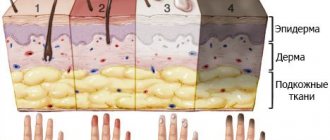Causes
Possible causes of bleeding:
- mechanical trauma to the nasal mucosa;
- deviation of the nasal septum to one or both sides from the midline;
- thinning of the nasal mucosa;
- inflammatory processes of various origins;
- benign or malignant formations inside the nasopharynx;
- hyperthermia during an infectious process or after overheating in the sun;
- exacerbation of hypertension;
- hormonal disorders;
- abuse of vasoconstrictor drops;
- long-term use of NSAIDs;
- overdose of anticoagulants, leading to problems with blood clotting;
- dilation of blood vessels when drinking alcohol;
- diseases of the circulatory system, heart or blood vessels;
- changes in barometric pressure (divers, climbers, during air travel).
Expectant mothers, more often in the third trimester, experience mild nasal bleeding due to the growth of the capillary network in the nasal cavity due to increased production of estrogen.
Causes
As a rule, nosebleeds occur due to two mechanisms: coagulation disorders and increased permeability of vascular structures. Our nose is equipped with many small blood vessels. In the area of the anterior nasal septum they form a dense braid. Because the thin blood vessels adhere tightly to the surface of the thin septum, they can be damaged relatively easily, causing the typical nosebleed. Other blood vessels, on the contrary, are very rarely damaged.
The main causes of nosebleeds in a baby:
1. Infectious diseases (diphtheria, ARI or tuberculosis).
2. Thinning of the mucosa (atrophic form of rhinitis, long-term therapy with vasoconstrictor drops/sprays).
3. Pathologies of vascular structures and blood (hemorrhagic vasculitis, thrombocytopenia or hemophilia).
4. Symptomatic increase in blood pressure (emotional stress, excessive physical activity, heat or sunstroke).
5. Somatic diseases (lack of vitamin C, K and calcium, chronic liver diseases, vegetative-vascular dystonia, etc.).
6. Nose injuries (fracture, bruise, damage by any object, etc.).
Often a child’s nose bleeds due to disturbances in the microclimate in the room. Insufficient air humidity or high ambient temperatures lead to dryness of the mucous membrane. This helps reduce the elasticity of the vascular wall, which becomes fragile. Often a child's nose may bleed for no reason.
Types of nosebleeds
There are 2 types of nosebleeds and are classified by location:
- Anterior - blood flows from one or both nostrils in the form of drops or streams. Most often, this deviation from the norm affects the capillaries. This epistaxis is not dangerous and usually stops without outside help.
- Posterior section - blood does not appear from the nasal canals, but flows into the pharynx and enters the digestive tract. It is provoked by damage to large blood vessels localized in the lower parts of the nose. They usually require medical attention to resolve.
Posterior bleeding is a rarer occurrence than anterior bleeding, but is more life-threatening. Bleeding from the nasal cavity is also divided according to frequency into: one-time, recurrent or habitual.
Nasal bleeding - symptoms and treatment
Stopping nosebleeds is one of the earliest medical practices. Hippocrates also suggested squeezing the wings of the nose to prevent blood loss. Since nosebleeds can occur in the life of every person, it is important to know the correct procedure.
First aid:
- If bleeding occurs from the anterior parts of the nose, to stop it it is enough to sit or lay the victim down with his head elevated. Many people think that you need to throw your head back, but this is wrong. In this case, blood is swallowed, which leads to nausea and vomiting. The thrown back position of the head disrupts the outflow of blood from the veins of the head and neck, as a result, the pressure in the arteries increases, and the situation worsens.
- It is necessary to determine which half of the nose is bleeding from. Often it is enough to insert a small cotton ball or gauze into this half, moistened with vasoconstrictor drops (Naphthyzin, Sanorin) or a 3% solution of hydrogen peroxide.
- Press the wing of the nose tightly with your finger against the nasal septum and hold in this position for up to 15 minutes.
- Apply cold to the bridge of your nose - a piece of ice in a cellophane wrapper, a wet towel.
- Measure blood pressure. If it is elevated, and the patient has previously been prescribed a drug for hypertension, then it should be taken. If this is the first episode of a sharp increase in blood pressure, then you need to call an ambulance - a hypertensive crisis is especially dangerous in patients without a history of hypertension (high risk of stroke).
- If the measures do not help within 15-20 minutes, you need to call an ambulance. First aid measures continue to be provided until the doctor arrives.
If bleeding recurs (recurs) several times a month, you should definitely consult an ENT doctor as planned.
Medical assistance.
The most common method of stopping nosebleeds is tamponade. When used correctly and in a timely manner, its effectiveness is 80% - 90% [9].
There are two ways to perform nasal tamponade: anterior and posterior. In most cases, anterior tamponade is sufficient.
1. Anterior tamponade. The indication for anterior nasal tamponade is the lack of effect of the simplest methods of stopping anterior nosebleeds within 15 minutes. Long narrow turundas made from bandage are used as a tampon. They can be impregnated with ointments with antibiotics and hemostatic drugs. Turundas are placed in layers into the bleeding half of the nose using tweezers and a nasal speculum. Next, tamponade must be performed on the second side to prevent unwanted displacement of the nasal septum. A sling-shaped bandage is applied to hold the tampons. The patient is left under observation, periodically examining the back of the pharynx. The effectiveness of anterior tamponade is associated with the mechanical pressure of a tightly placed tampon on the area with a damaged vessel, as well as the hemostatic properties of the drug with which the tampon is impregnated [9]. Tampons are left in place for a period of 1 to 3-4 days.
2. Posterior tamponade. If, after performing anterior tamponade, blood continues to flow down the back wall of the pharynx, resort to posterior nasal tamponade. Using a special catheter, a dense square-shaped tampon is inserted into the nasopharynx, installed in the posterior parts of the nose, then anterior tamponade is again carried out and the nasopharyngeal tampon is fixed with threads. Instead of gauze swabs, special sponges soaked in a hemostatic agent, a substance that improves blood clotting, can be placed in the nose. In addition, special balloon nasal catheters have been developed that are installed in the nasal passage and inflated with air, which is an alternative to classic nasal tamponade.
Possible consequences of stopping bleeding by introducing tampons into the nasal cavity:
- the excretory canals of the paranasal sinuses are blocked, in patients with weakened immunity, the risk of developing inflammatory processes in them increases;
- the presence of tampons in the nose leads to severe discomfort for the patient, causes headache, possibly an increase in temperature and the development of general signs of an inflammatory response of the body [11];
- tampons can injure the mucous membrane and, if not properly cared for, create conditions for the development of pathogenic microorganisms.
If the damaged vessel is small and detected by a doctor, the bleeding can be stopped using modern medical equipment: laser photocoagulation, cryocoagulation, diathermocoagulation using a needle electrode, coagulation using the cold plasma method.
In dangerous cases, if the vessel is located in the posterior parts of the nose, is a large vascular branch or trunk, the bleeding is stopped surgically - by ligating the large vessels. This method is used relatively rarely - in 4.5–10% of patients in hospital [7]. Most often, ligation of large vessels is resorted to in the absence of results from the medical care measures performed.
Drug therapy.
Along with mechanical methods of stopping nosebleeds, drug therapy is used:
- antihypertensive drugs in case of hypertension;
- hemostatic therapy for disorders of the coagulation system.
If there is significant blood loss, a blood transfusion is performed. In severe cases, treatment is carried out comprehensively by an otolaryngologist, therapist, cardiologist, and, if necessary, a hematologist and resuscitator [9].
Symptoms
The main symptom of epistaxis is blood coming out of the nostrils or entering the oral cavity from the upper part of the pharynx. In more severe cases, accompanying symptoms are revealed:
- weakness, nausea, disturbance of spatial orientation;
- feeling of fullness in the ears;
- headache;
- tachycardia;
- hypotension;
- pallor of the skin.
If blood ends up in the stomach, vomiting with blood clots occurs, and the stool becomes dark in color.
Symptom options
Nasal discharge with blood can look different and by its appearance you can tell what problem is causing this symptom.
Green snot mixed with blood
Thick and green discharge indicates an infection in the nasopharynx, bacterial or bacterial-viral in origin. Often, rinsing the sinuses with a saline solution is enough to eliminate the problem. If the illness drags on, then you need to go to the doctor. Since there is a possibility that the infection is meningococcal or staphylococcal.
First aid for nosebleeds
To stop bleeding, first aid includes the following:
- The victim is seated on a chair or armchair so that his body leans slightly forward.
- A cotton wool or gauze swab is generously moistened with water or 3% peroxide and placed in the nostril from which blood is flowing.
- Before removing the tampon, it is re-moistened by applying liquid through a pipette, and then carefully removed.
If there is no injury to the nasal septum or a fracture of the facial bones, and there is nothing at hand to make a tampon, then simply press the wings of the nose against the septum with the thumb and forefinger. The time of such fixation is 3-5 minutes. The victim should breathe through his mouth with his head slightly tilted forward.
It is also advisable to apply something cold to the bridge of the nose or the back of the head for a quarter of an hour. To make sure that blood does not flow into the throat, simply spit and evaluate the condition of the saliva. If there are no streaks of blood in it, then there is no reason to worry.
What to do if your nose bleeds?
When bleeding begins, it is important to try not to be nervous, as nervousness causes our heart to beat faster, which leads to more blood loss.
The algorithm for stopping bleeding is as follows:
- Sit up straight, tilt your head forward.
- You should be comfortable: loosen your belt and collar, open the window if necessary.
- Apply a cold, wet towel or ice to your nose and place a warm heating pad on your feet. This will help narrow the blood vessels in your nose and widen them in your legs, which will reduce bleeding.
- Pinch the bleeding vessel: squeeze the wings of the nose with your fingers for 3-5 minutes, the bleeding should stop. Also for this purpose, you can insert a gauze swab pre-moistened in hydrogen peroxide into the nostril.
If you have completed all of the above points and the blood continues to flow, call an ambulance immediately, because even a small loss of blood can lead to fainting.
What should you remember when you have a nosebleed?
- Do not lie down or let your legs be higher than your head - this will increase bleeding;
- Do not throw your head back: a large amount of blood entering the stomach can cause vomiting, in addition, blood can flow into the windpipe and make breathing difficult.
- Once the bleeding has stopped, avoid eating or drinking caffeinated drinks to avoid increased blood pressure and further bleeding.
Preventing nosebleeds
Remember, frequent nosebleeds are a reason to consult a doctor. The specialist will identify the cause of the problem and prescribe treatment, which may include the use of hemostatic agents, as well as medications that improve blood circulation.
To prevent rebleeding, a specialist may recommend:
- Taking medications and vitamins to strengthen blood vessels.
- Proper diet. Adding foods rich in vitamin K and C to the menu. Vitamin K is responsible for blood clotting; parsley, spinach, basil, bananas, avocados, broccoli, bran, etc. are rich in it. Vitamin C strengthens the walls of blood vessels, it is found in large quantities in rose hips, sweet peppers, currants, citrus fruits, etc.
- Activity and moderate physical activity: light exercise in the morning, daily walks in the fresh air, visiting the pool, etc.
Be healthy!
When to see a doctor
An emergency medical team must be called in the following cases:
- the bleeding is massive and continues for too long;
- there is a suspicion of traumatic injury or entry of a foreign body;
- any diseases associated with impaired hemostasis have been diagnosed.
Age may also influence the difficulty of treatment. The older the patient, the more difficult it is to stop the bleeding and the more severe the consequences of blood loss.
Those who constantly have nosebleeds, when blood pressure rises or against the background of exacerbation of other systemic diseases also need medical advice. First of all, nasal bleeding is the profile of an otolaryngologist (ENT), but endocrinologists, hematologists and other specialists may also be interested in such a patient.
Diagnosis and treatment
The evaluation of epistaxis begins with a history and general physical examination using a nasal dilator and nasopharyngeal speculum.
To accurately identify the cause of the pathology, additional diagnostic methods are used:
- general clinical analysis of blood and urine;
- coagulogram;
- Ultrasound;
- ECG;
- X-ray, CT, MRI.
When bleeding from the nose, treatment begins with rapid relief of the pathological condition in order to prevent large blood loss. Then the cause that caused the epistaxis is eliminated and the possible consequences of acute blood loss are prevented.
If the bleeding cannot be stopped through the use of anterior or posterior tamponade and the use of hemostatic drugs, then resort to the following manipulations:
- radio wave method - the vessels are cauterized using the Surgitron apparatus, which emits high-frequency radio waves through electrodes, instantly evaporating moisture in the cells and promoting coagulation.
- electrocoagulation - vessels are cauterized under the influence of electric current;
- cryocoagulation - cauterization of the mucous membrane using liquid nitrogen;
- laser coagulation - the vessel is evaporated under the influence of high temperature of a narrowly directed laser beam;
If epistaxis is associated with a blood clotting disorder, the patient is prescribed hemostatic agents. If the reason lies in hypovitaminosis, then the patient is given a multivitamin complex.
Prevention
To avoid bleeding in adults or children, it is useful to adhere to the following rules:
- get rid of the habit of picking your nose;
- against the background of allergic or cold nasal congestion, do not blow your nose too often;
- when practicing dangerous sports (boxing, rugby), wear a protective helmet;
- use vasoconstrictors strictly according to instructions (no longer than 7 days);
- to reduce pressure in the nasal cavity, you should sneeze with your mouth open;
- If coagulants previously caused nasal bleeding, then the next time they are prescribed, be sure to inform your doctor about this.
It is also important not to rip off the crusts in the nose formed after bleeding until the mucous membrane recovers on its own. Otherwise, bleeding in this case may recur every day.
When working in production with polluted air, it is necessary to use personal protective equipment. To prevent bleeding, it is useful to undergo regular preventive examinations. With the next episode of epistaxis, it is important to see an otolaryngologist to find out the cause of the bleeding and receive recommendations for the future.
Treatment methods
The presence of blood in the snot is a sign that you need to see an otolaryngologist. Timely treatment is necessary in order to prevent the development of the disease.
To treat a runny nose, your doctor may prescribe several medications, which may include:
- Vitamins. Organic compounds are necessary to strengthen the entire body in general and blood vessels in particular. They are especially necessary if a person does not eat properly, since such food lacks vitamins and beneficial microelements.
- Antibiotics. For almost all types of diseases, doctors prescribe these drugs. They are available in the form of ointments, solutions, powders and tablets.
- Antiviral drugs. They are used only if the disease is infectious or viral in nature. Such agents suppress the activity of pathogenic microorganisms and increase the body’s resistance to them.
- Vasoconstrictor drugs. These medications help relieve swelling of the nasal mucosa. But it is worth noting that they cannot be used for more than 7 days, as the body gets used to it and they become less effective.

